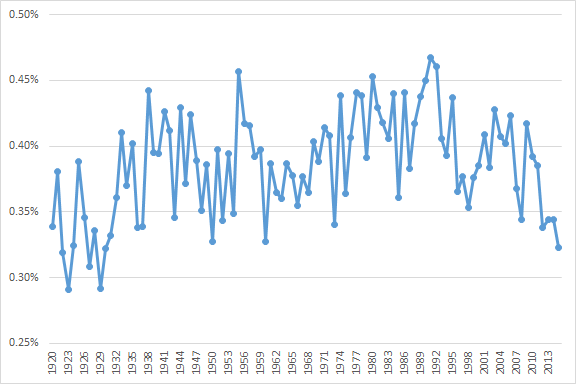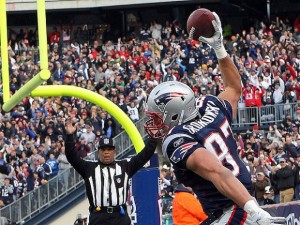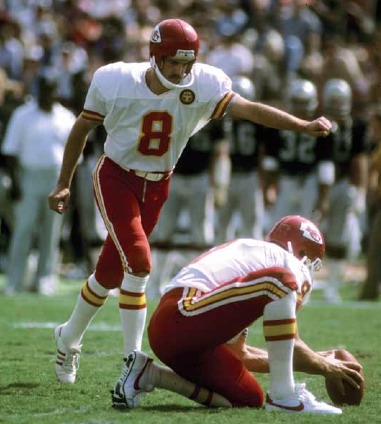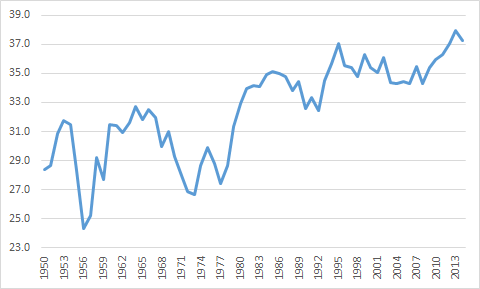Today’s guest post/contest comes from Adam Harstad, a co-writer of mine at Footballguys.com. You can follow Adam on twitter at @AdamHarstad.
Like most of you, I like to spend my weekends building custom databases of NFL statistics. This past weekend, while doing just that, I happened to notice that Marshall Faulk topped 2,000 yards from scrimmage in both 2000 and 2001 despite playing just 14 games each year. Which sent me scrambling to the Pro-Football-Reference.com player season finder so I could share on Twitter the novel observation that Marshall Faulk was, indeed, good at football.
As luck would have it, the humble proprietor of Football Perspective just happened to be sitting at home, trolling around on Twitter, and likewise playing with various historical databases. He saw my tweet and responded in kind, with a list of all NFL players sorted by average yards per game from age 25 to 28.
All of this inspired a fun back-and-forth between various other users on Twitter which culminated in me providing a list of all running back seasons with 250+ carries and 50+ yards per game receiving. It’s a rather short list featuring just 8 total seasons. Marshall Faulk accounted for four of those eight seasons, consecutively, from 1998 to 2001.
I quickly noticed an interesting thing about that last list, though. Not only did Marshall Faulk account for half of those seasons in NFL history, but he actually had the top four by receiving yards per game. In fact, if we adjust our “receiving yards per game” baseline from 50 to 54, we wind up with this list, instead.
Now that is a rather more impressive list. Using just two simple cutoffs, we had managed to create a list that was just four names long, and every single one of those names was “Marshall Faulk.”
Seguing away for a second… in the early days of the internet, before there were continents composed solely of cat pictures (or handy NFL season finders to query, for that matter), people would resort to pretty much anything to keep themselves entertained. One game that sprung from these dark times was known as “Googlewhacking”. A Googlewhack was two words that, when entered together into the search bar of the eponymous Google, matched just a single result on the entire internet.
For instance, there was once a time when searching the words “ambidextrous scallywags” (but without the quotation marks) would return just a single match. This was then a successful Googlewhack. Googlewhacks were, by their very nature, ephemeral constructs, since the very act of publishing a Googlewhack would cause the published result to show up on Google and would therefore cause the words to lose their Googlewhack status. [continue reading…]






